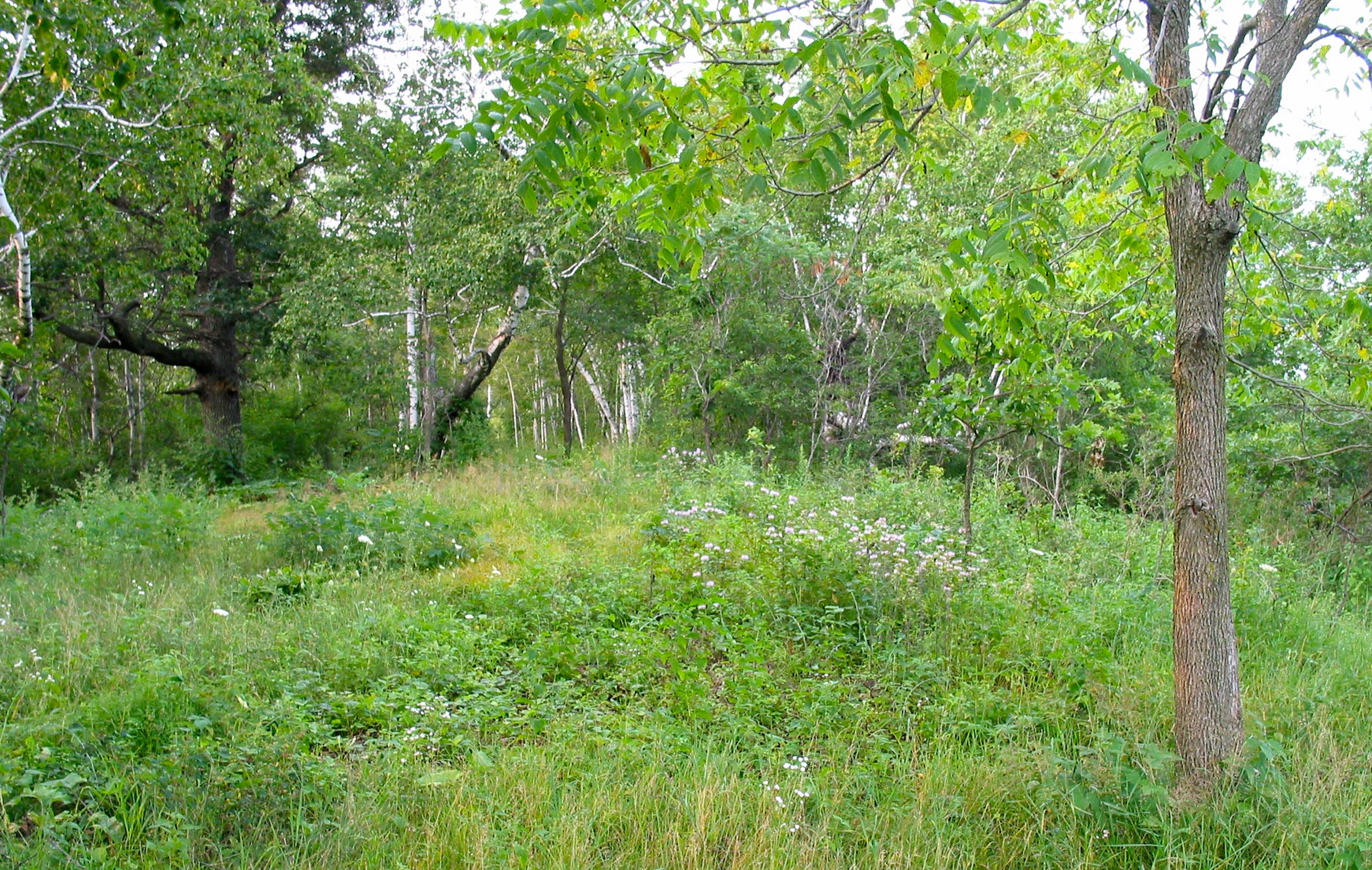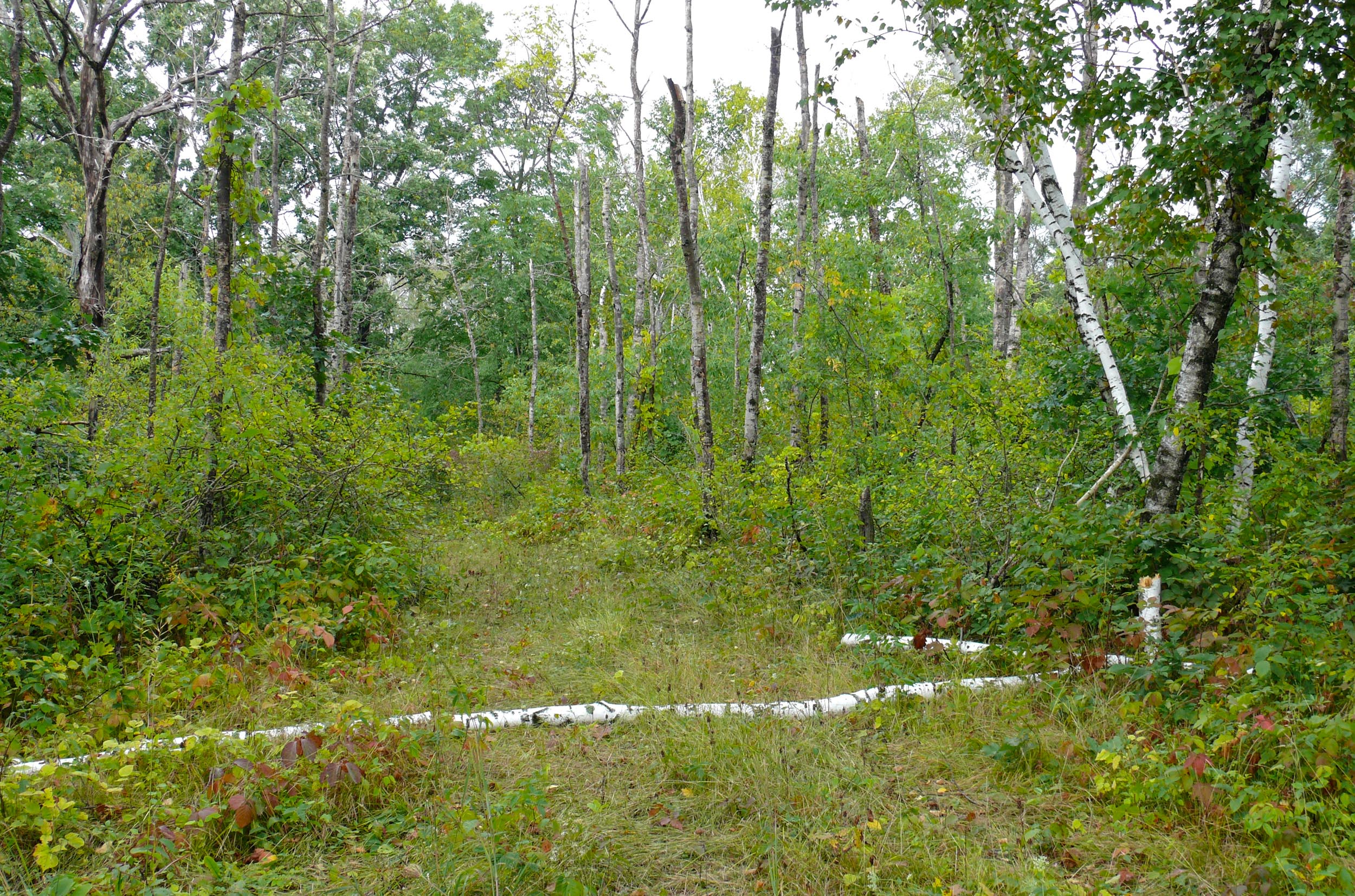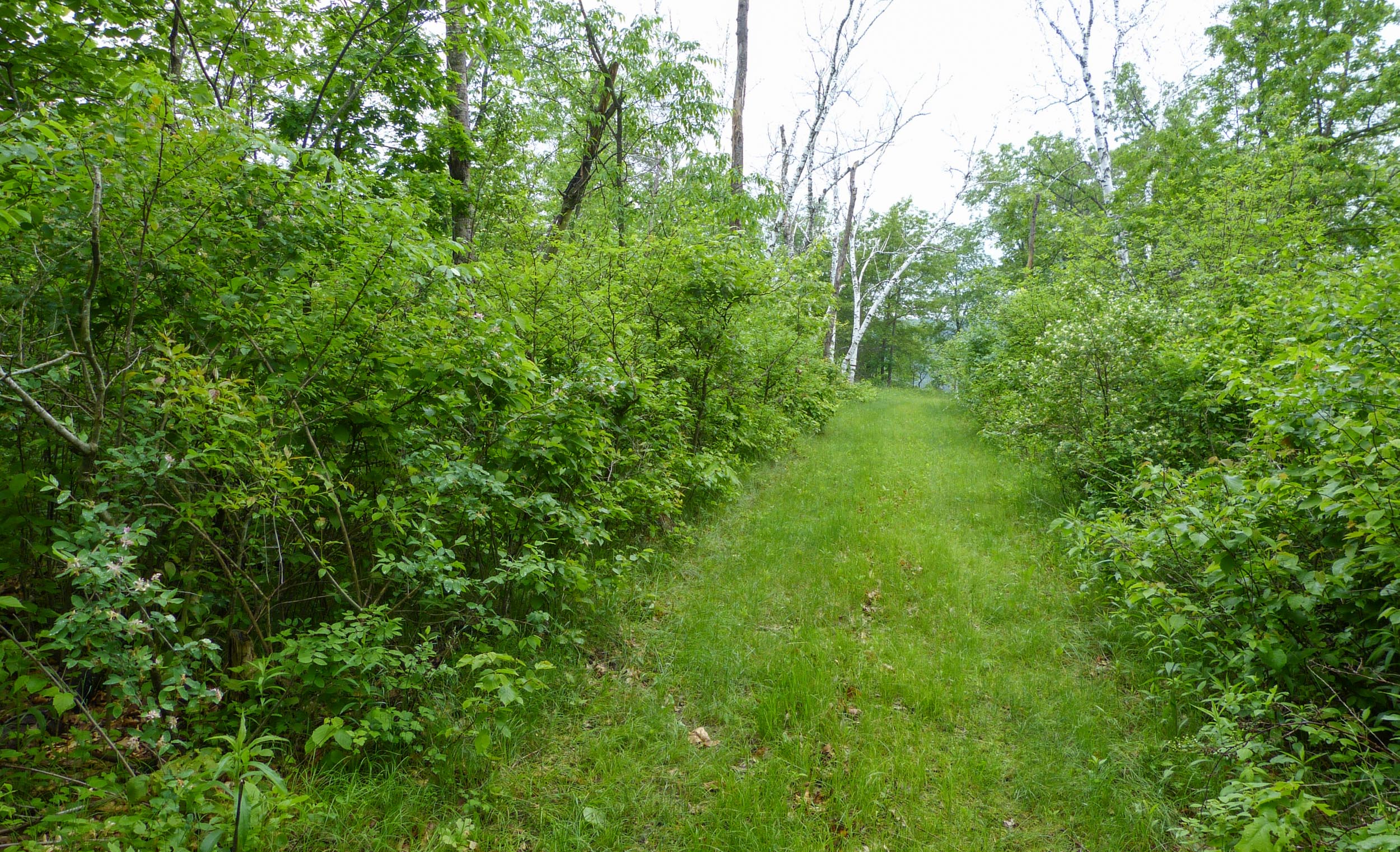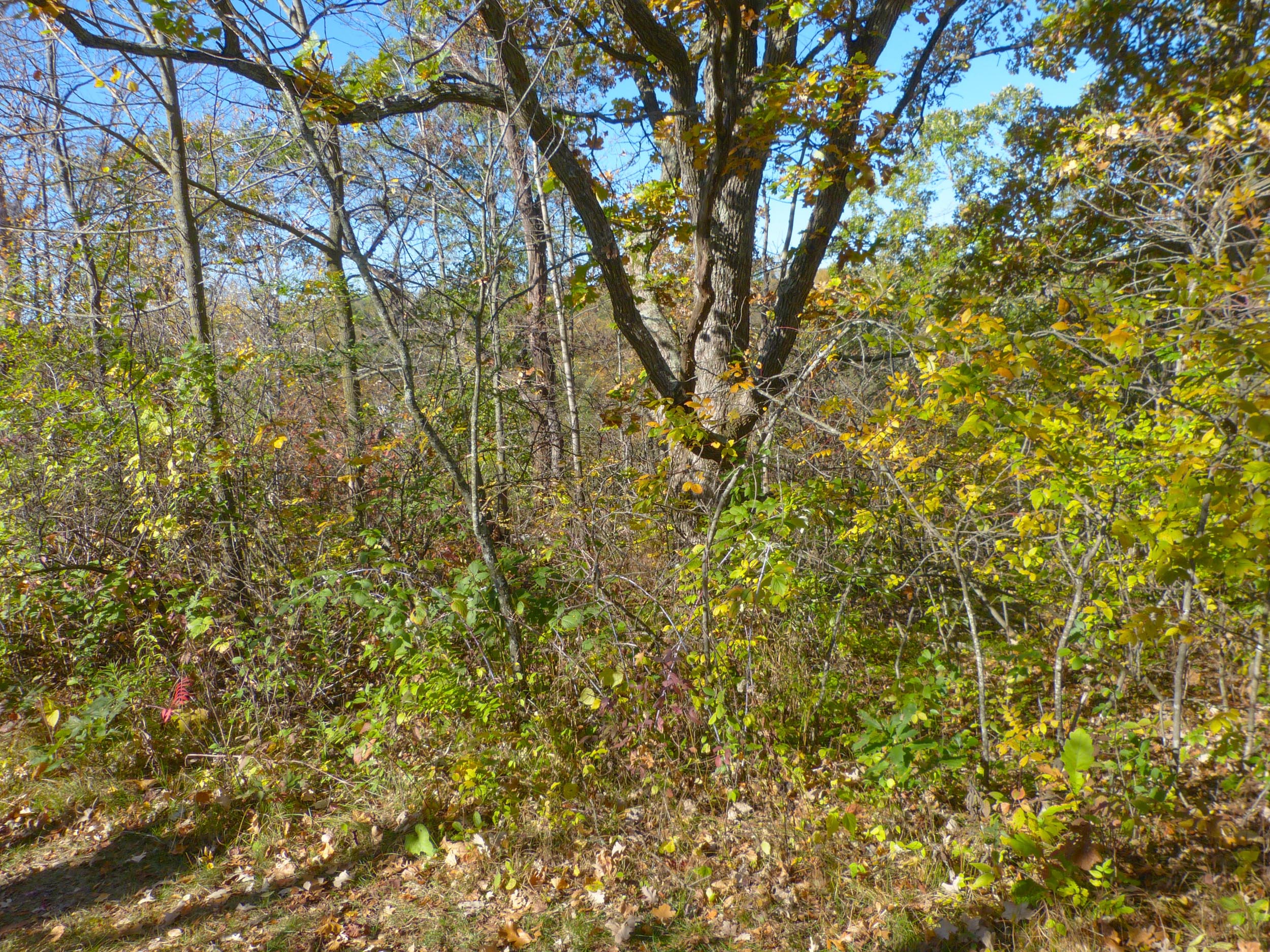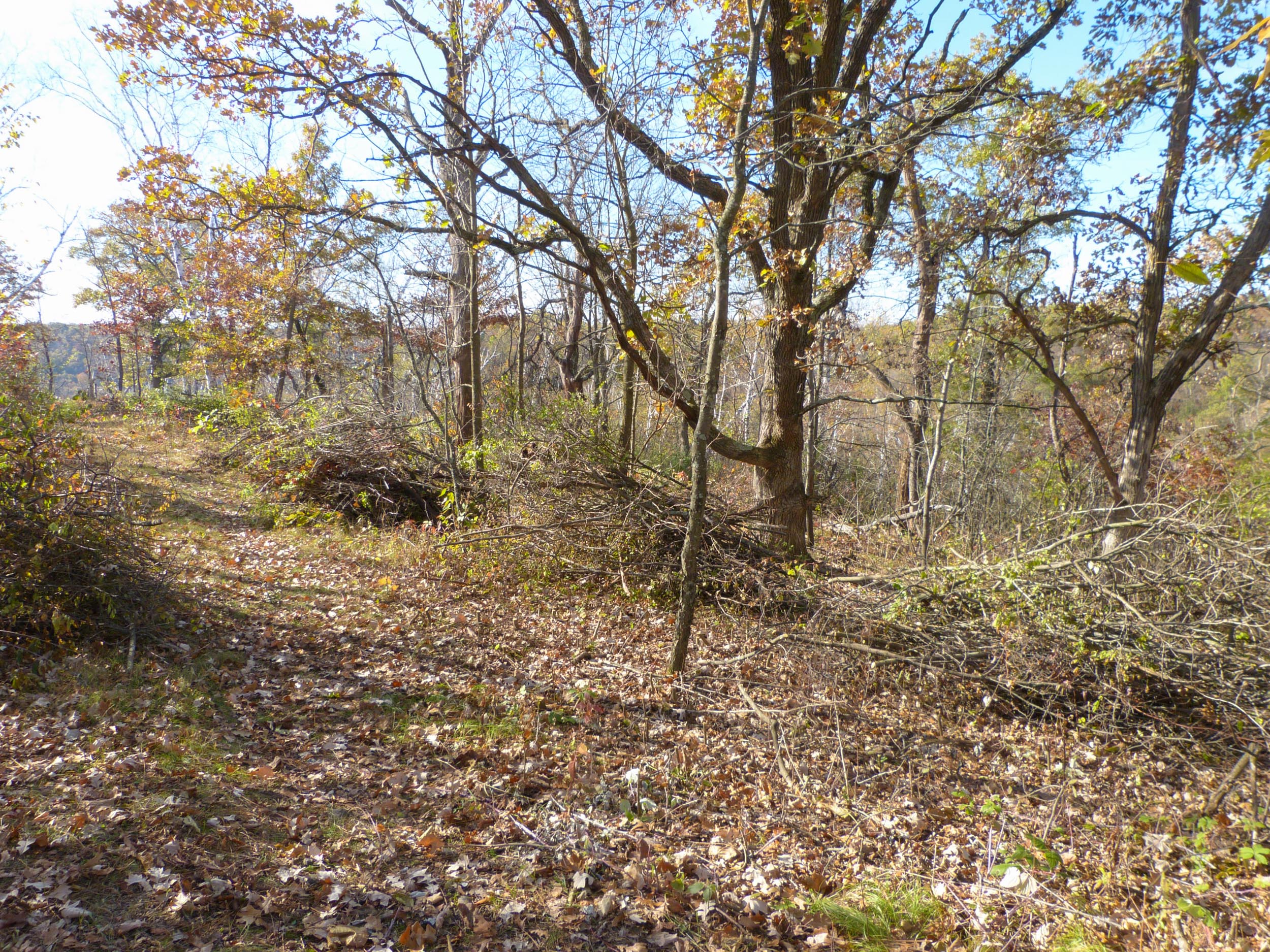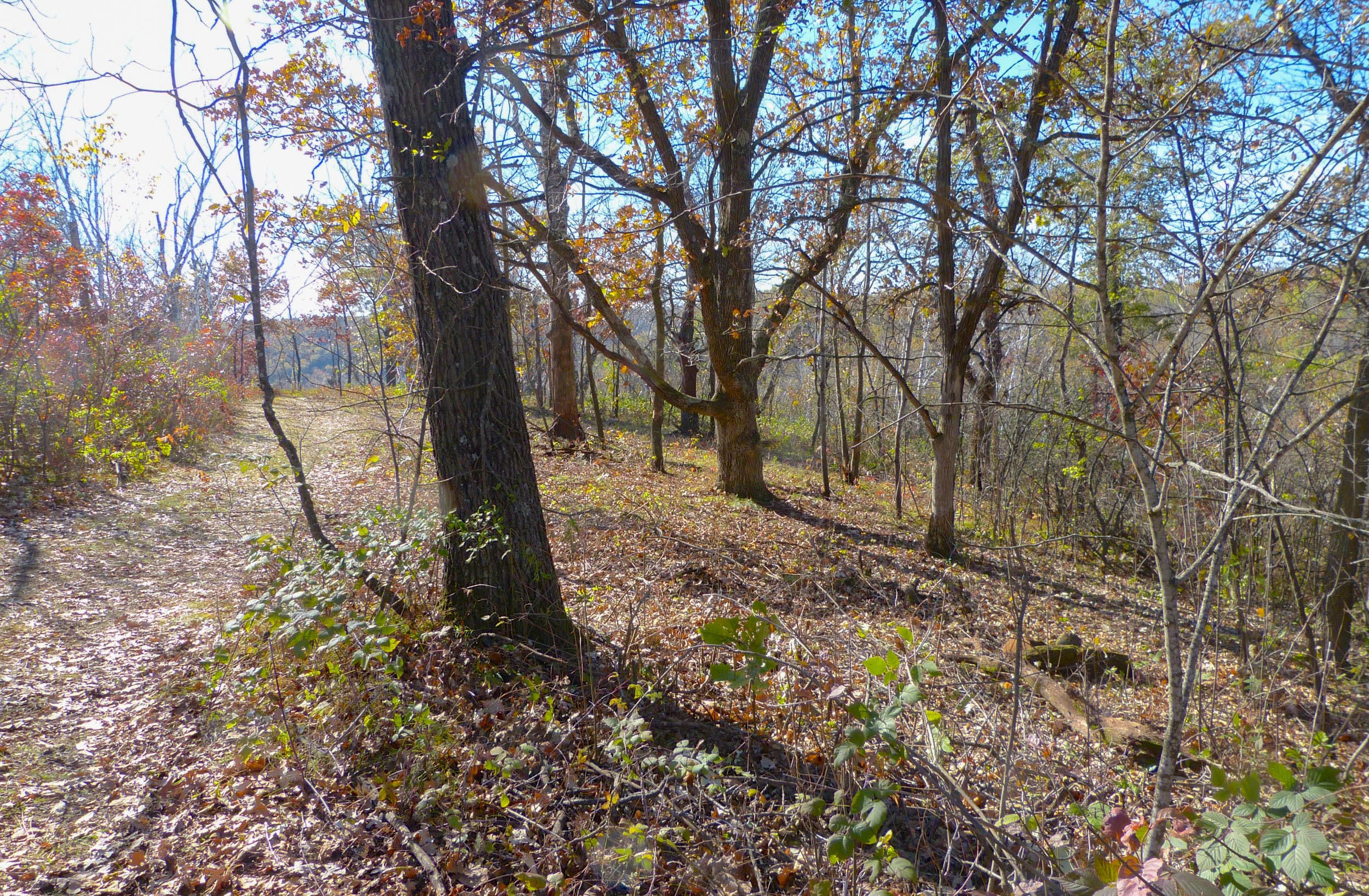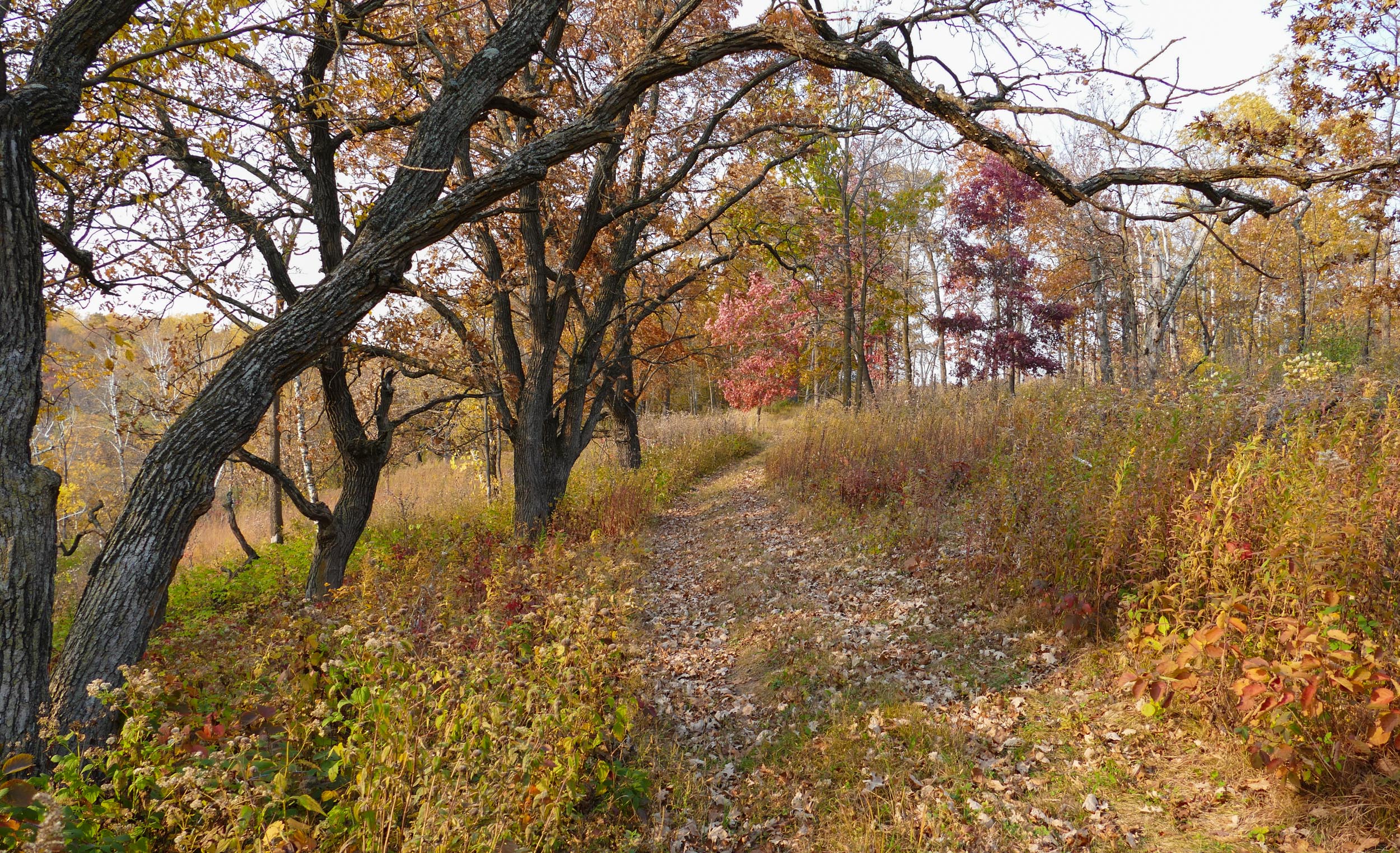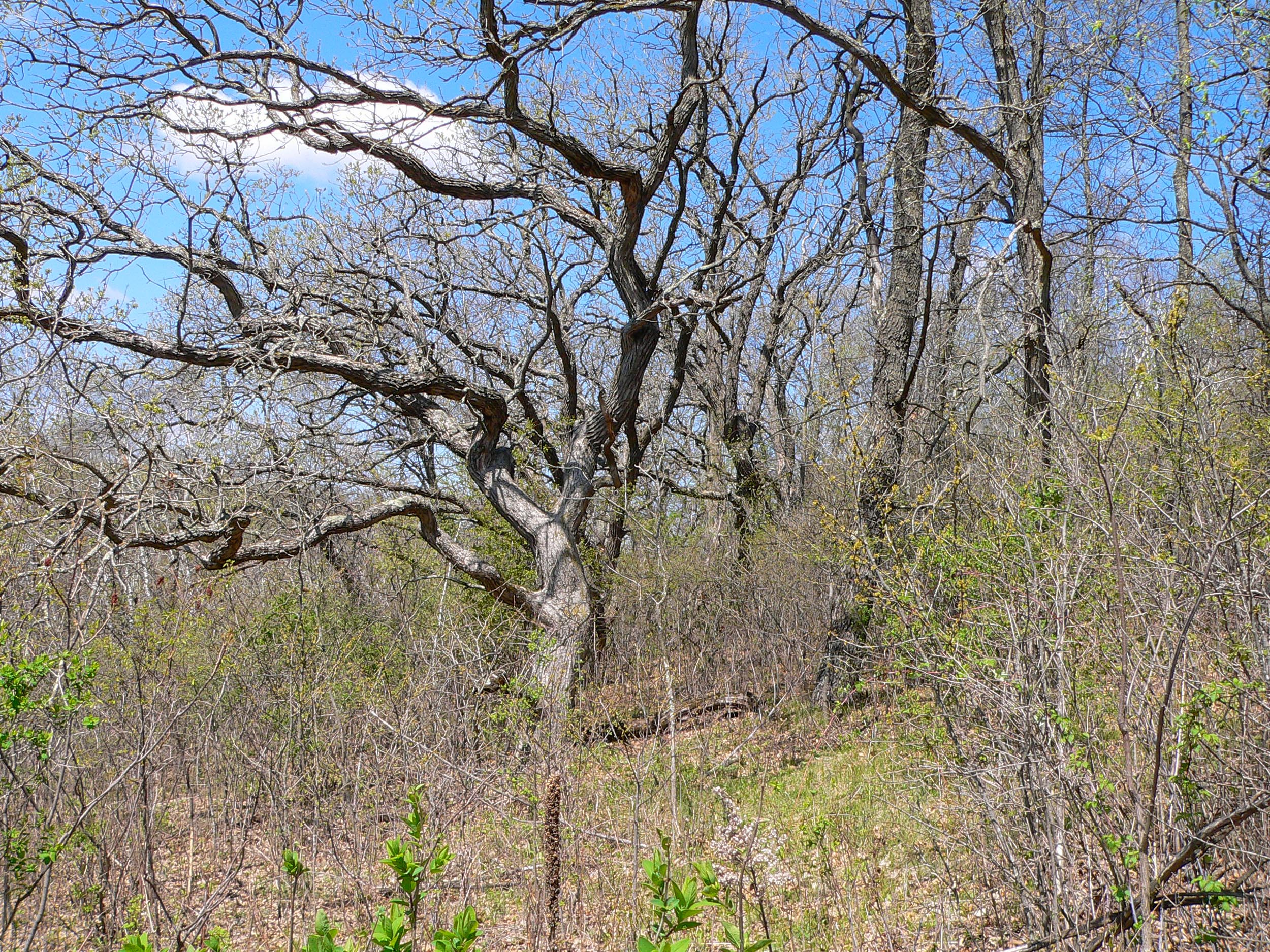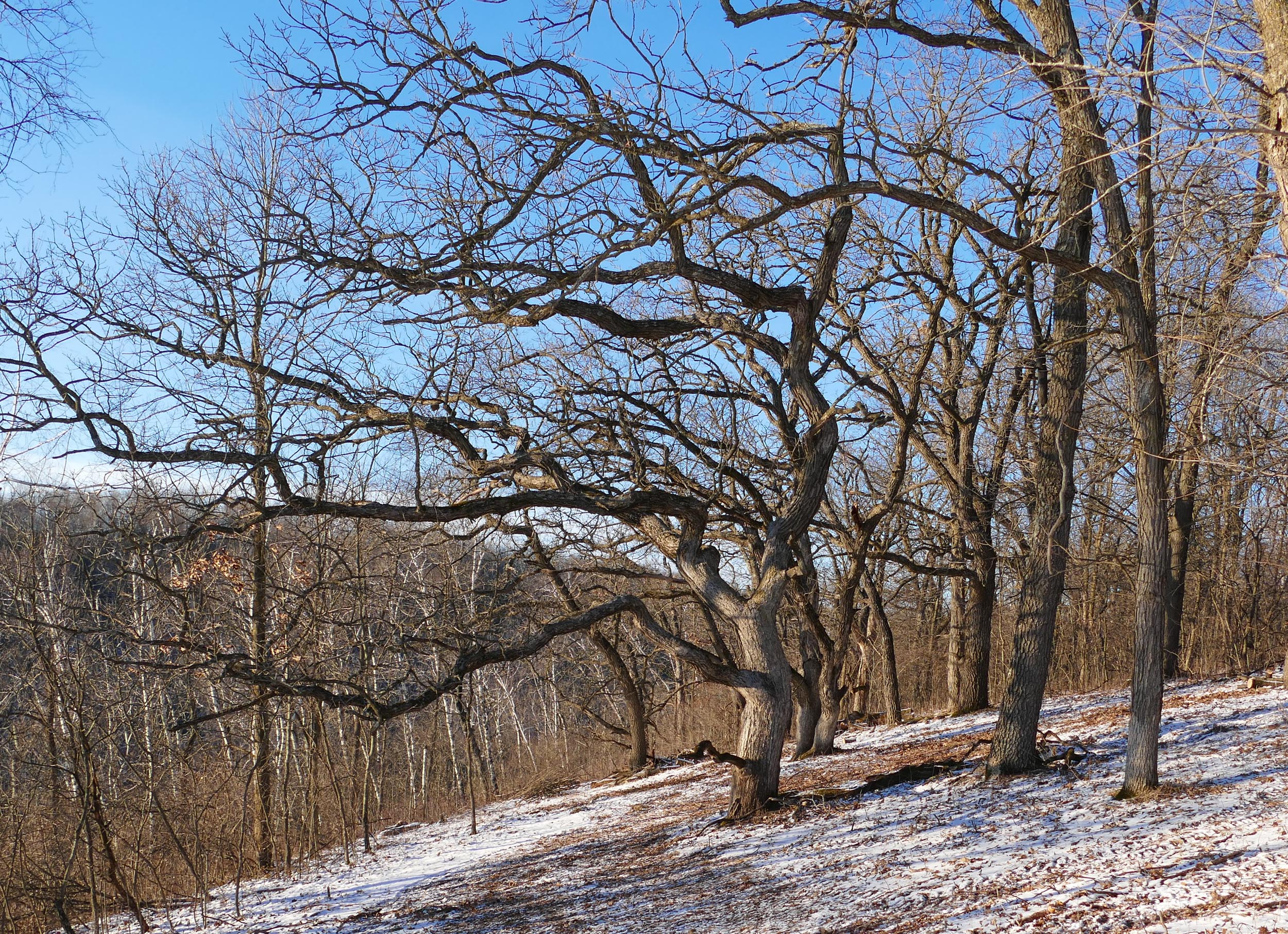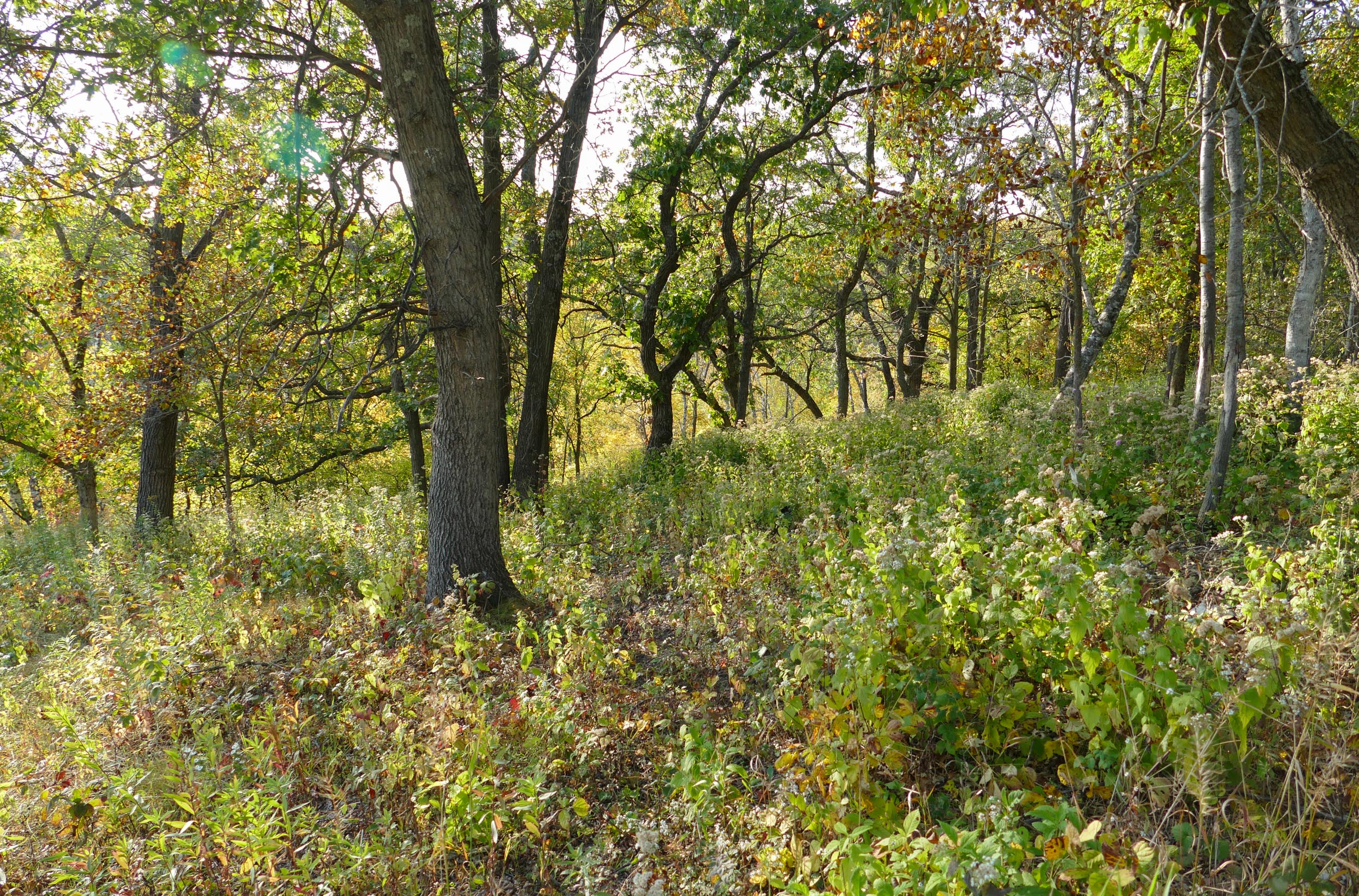[To see more about restoration of other types of remnants, go to the main Restoration of Remnants page]
Our most recent restoration passion is for restoring overgrown savanna. Most of our woods, except on our few north-facing slopes, was once savanna. It’s easy to find traces of that ecosystem. There are scatterings of huge old oak trees with spreading branches, showing that they grew up when there was more space and light around them. Under the trees are many plants that normally grow in places with more sun: Monarda, Pussy-toes, Hoary Puccoon, Prairie Violet, and grasses like Big Bluestem and Bottlebrush Grass.
For around 100 years – from the 1880s until the 1970s – these woods were heavily grazed. This was a dairy farm, and fences in the woods show that the cows were kept out of the crop fields, but allowed to wander in the woods. The woods were also logged – heavily in some places, not so much in others. When we bought the farm in 2000, all the woods were thickly overgrown with small trees and brushy shrubs.
Our first savanna project, and still our largest, is Twisted Oak Savanna.
Birch and aspen forests have invaded many of these formerly savanna areas. This one had a forest of young aspen trees, and numerous medium and larger birches. This is looking into the savanna area from the dry prairie point in 2004, after we’d mowed a path through it, but hadn’t done any clearing work.
My first project was to girdle the aspens.
We weren’t sure what to do next, so we didn’t do anything more for several years. The aspens died in the first year or two, which let in more light, so the bushes and small trees, which had been very small because they didn’t get much light, began to grow. Now we had a jungle – fallen and falling dead trees, mixed with thick, healthy, growing brush.
We cut and piled the fallen trees, and Mike moved the piles to a larger pile back in the woods.
But the brush was still a problem. It was so thick we couldn’t even see into it. It was This is the summer of 2013.
In the fall of 2013 we decided to try to ‘liberate’ one one of the big old Burr Oaks – one of the few we could actually see through the brush.
We cut and treated brush and small trees, and made piles for Mike to carry back to our pile in the woods.
That was very successful. It was fun work to do, and very rewarding to see the oaks emerge from the jungle. We were so pleased with our efforts that once that tree was out in the open, we kept going and liberated more trees.
We’ve continued to enlarge this area. Every year, as we explore farther back into the woods, we discover more open-grown oaks that are part of the savanna. This photo was taken in the fall of 2020.
Here’s the most recent addition to Twisted Oak Savanna – a line of open-grown oaks on the northern-most edge. Every time we’d clear around one these oaks, we’d see another one beyond it. There are still more we haven’t gotten to yet. Here’s a ‘before photo’ from 2005.
A photo from the fall of 2017, right after we cleared around a few of them.
And a slightly different view of the same area from September 2020.
We still approach savanna restoration the same way, except that we’re more careful to cut and treat each woody stem. If we skip them, they grow back the next year. And if we cut without treating with herbicide, they often make even more stems in subsequent years. I usually do the small stems and small trees, Mike cuts and treats the medium sized trees, and we girdle the largest ones and let them die and then fall on their own.
We leave all the larger oaks, some smaller Burr and White Oaks, some native shrubs like Winterberry, Hawthorn, Viburnum and Serviceberry, dead trees, and anything I can’t identify. Our goal is to let in more light so the ground layer can recover.
Here’s a list of the native ground layer plants I’ve found growing in these overgrown savannas.

